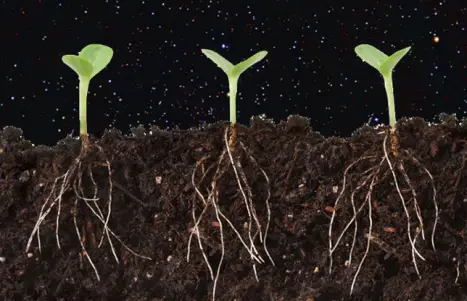
Next time when you go to nearby park for a walk, closely observe the plants. You will find that all kind of plants, from grass to huge trees, grow their stems and leaves up but their roots below the ground.
Scientists and botanists have also closely researched on this phenomenon and have named it “Gravitoprism.” The word Gravitoprism is made up of two words “Gravi” meaning “gravity” and “tropism” meaning “turning” in Greek language. This makes turning towards gravity. The roots exactly do the same; they keep turning downwards, due to gravitational force. The question is why do they constantly keep turning towards the gravity?
The answer lies in the fact that the roots of the plants act like kitchen where they collect and prepare food and water for the plant. Since nutrients for plants and water are found deep inside the ground, the roots keep growing down. They keep growing downwards constantly to explore the soil and collect more and more water and food from the soil. Since most of plants grow on the surface where there is no food readily available for the plants, the roots keep growing downwards.
Another significant reason behind roots downward growth is their role of an anchor. The roots anchor the entire plant and keep it firmly grounded. In some plants, some roots grow above the ground from either branches or leaves. These roots also eventually go deep inside the ground or attach themselves to some other plant or object as they grow.